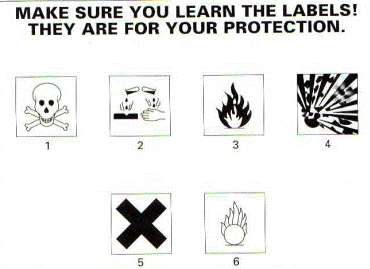Complete the rules. Verb tense
Present Continuous →Past Continuous
Present Simple → _______________1
Past Simple → _________________2
Present Perfect → _______________3
will → would
can → _______
must →
Time expressions
today → that day
yesterday →
this week→
next month →
Report what the following people said.
1. We will improve efficiency,' explained the Engineer.
2. Jon has tested yesterday's samples,' said the Supervisor.
3. 'You will be fined if you pollute the river,' warned the Inspector.
4. Our design team has won this year's prize for innovative technology,' announced the Director.
● When a question begins with who, which, what, etc., we use that question word when we report the question.
● For yes/no questions we make sentences with if ox whether.
● The word order in the reported question is the same as for a statement, not a question. We change the tense of the verb as in l.
'How do you dispose of the waste paint?'
The Inspector asked how we disposed of the waste paint
Do you add chlorine to the water?'
The Engineer asked if we added chlorine to the water.
'Will you be able to repair the sewage pipe today?'
The Foreman asked whether we would be able to repair
the sewage pipe that day.
Read the report. Then complete the dialogue.
I asked the engineer how he applied paint to the products. He explained they sprayed the paint in a ventilated closed room. When I asked him how much of the paint actually reached the product he said they estimated about 40%. He explained that the excess was removed in the air stream and paint particles were absorbed in a water curtain. I asked if this was stored. He said this settled in a tank and the resulting sludge had to be disposed of.
Interviewer How _____________________ paint to the product?
Engineer We _______________________in a ventilated, closed room?
Interviewer How much of the paint ____________________________________ ____________________ the product?
Engineer The excess ________________________________________ in the air stream and paint particles ___________________________________ _________________________________________________ in a water curtain.
Interviewer _______________________________________________?
EngineerThis ___________________________________________________ in a tank and the resulting sludge _________________________________
Vocabulary
Reporting verbs
1. Listen to the telephone call and complete the notes in the email.
Hi Jon
I've spoken to Lila. She confirmed that the pipe from the_________1 had become partially blocked and agreed to______ 2 quickly. She apologized for not finishing the ___________3 on the proposal and promised to let me have it___________4 .
2. When we report what has been said in a conversation, we often paraphrase (explain more simply). We use reporting verbs to do this. Look at the underlined verbs In the email and listen again, or read the Listening script on p.127.
Reporting verbs
Admit
Confirm
Question
Advise
Enquire
Recommend
Agree
Insist
Remind
Apologize
Offer
Suggest
Ask
Promise
Thank
Complain
Propose
Safety at work
TASK 1
Tuning in
What do the warnings labels on chemicals mean? Match each label to the correct warning?
aHighly flammable
bHarmful
cExplosive
dCorrosive
eOxidizing
fToxic

MAKE SURE YOU LEARN THE LABELS! THEY ARE FOR YOUR PROTECTION.
List some of the potential dangers in your laboratory, workshop, or place of work. I low is the risk of those hazards reduced?
Study the safely instructions from a workshop below, and then answer these questions.
a. Who are the instructions for?
b. Who wrote them?
c. What was the writer’s purpose?
| Wear protective clothing at all times. | |
| Always wear eye protection when operating lathes, cutters, and grinders and ensure the guard is in place. | |
| Keep your workplace tidy. | |
| The areas between benches and around machines must be kept clear. | |
| Tools should be put away when not in use and any breakages and losses reported. | |
| Machines should be cleaned after use. |
Reading - Understanding the writer's purpose
Knowing what the writer's purpose is who the writer is. And who the intended readers are can help us to understand a text. The safety instructions in Task 3 are clearly intended to encourage employees to be safety conscious and reduce the risk of accidents.
The writer is perhaps a supervisor or the company safety officer. And the intended readers are machine operatives. Knowing these things can help us to work out the meaning of any part of the text we may not understand.
